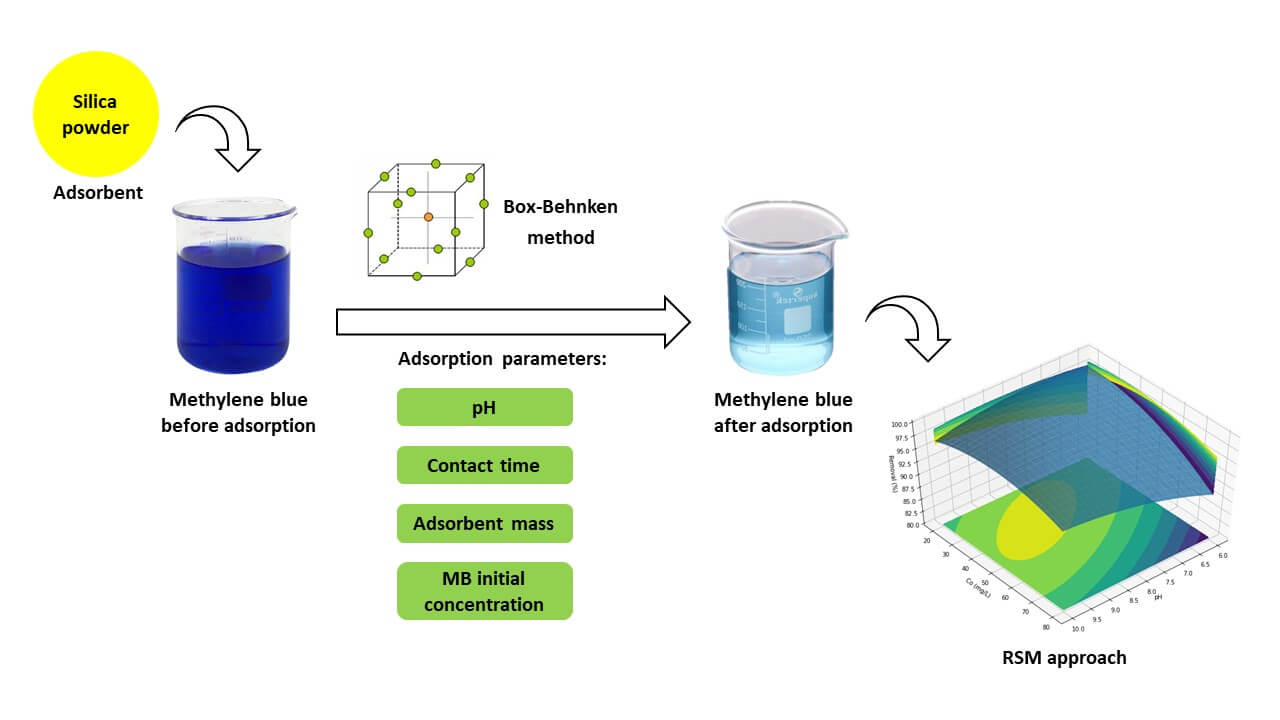 Open Access
Open Access
ARTICLE
Silica Gel from Chemical Glass Bottle Waste as Adsorbent for Methylene Blue: Optimization Using BBD
Chemistry Department, Faculty of Science and Analytical Data, Institut Teknologi Sepuluh Nopember, Surabaya, Indonesia
* Corresponding Author: Yatim Lailun Ni’mah. Email:
(This article belongs to the Special Issue: Special Issue in Celebration of JRM 10 Years)
Journal of Renewable Materials 2023, 11(12), 4007-4023. https://doi.org/10.32604/jrm.2023.031210
Received 22 May 2023; Accepted 22 August 2023; Issue published 10 November 2023
Abstract
This research focuses on the effective removal of methylene blue dye using silica gel synthesized from chemical glass bottle waste as an environmentally friendly and cost-effective adsorbent. The adsorption process was optimized using Box-Behnken Design (BBD) and Response Surface Methodology (RSM) to investigate the influence of pH (6; 8 and 10), contact time (15; 30 and 45 min), adsorbent mass (30; 50 and 70 mg), and initial concentration (20; 50 and 80 mg/L) of the adsorbate on the adsorption efficiency. The BBD was conducted using Google Colaboratory software, which encompassed 27 experiments with randomly assigned combinations. The silica gel synthesized from chemical glass bottle was characterized by XRD, FTIR, SEM-EDX and TEM. The adsorption result was measured by spectrophotometer UV-Vis. The optimized conditions resulted in a remarkable methylene blue removal efficiency of 99.41%. Characterization of the silica gel demonstrated amorphous morphology and prominent absorption bands characteristic of silica. The Langmuir isotherm model best described the adsorption behavior, revealing chemisorption with a monolayer coverage of methylene blue on the adsorbent surface, and a maximum adsorption capacity of 82.02 mg/g. Additionally, the pseudo-second-order kinetics model indicated a chemisorption mechanism during the adsorption process. The findings highlight the potential of silica gel from chemical glass bottle waste as a promising adsorbent for wastewater treatment, offering economic and environmental benefits. Further investigations can explore its scalability, regenerability, and reusability for industrial-scale applications.Graphical Abstract

Keywords
Cite This Article
 This work is licensed under a Creative Commons Attribution 4.0 International License , which permits unrestricted use, distribution, and reproduction in any medium, provided the original work is properly cited.
This work is licensed under a Creative Commons Attribution 4.0 International License , which permits unrestricted use, distribution, and reproduction in any medium, provided the original work is properly cited.


 Submit a Paper
Submit a Paper Propose a Special lssue
Propose a Special lssue View Full Text
View Full Text Download PDF
Download PDF Downloads
Downloads
 Citation Tools
Citation Tools